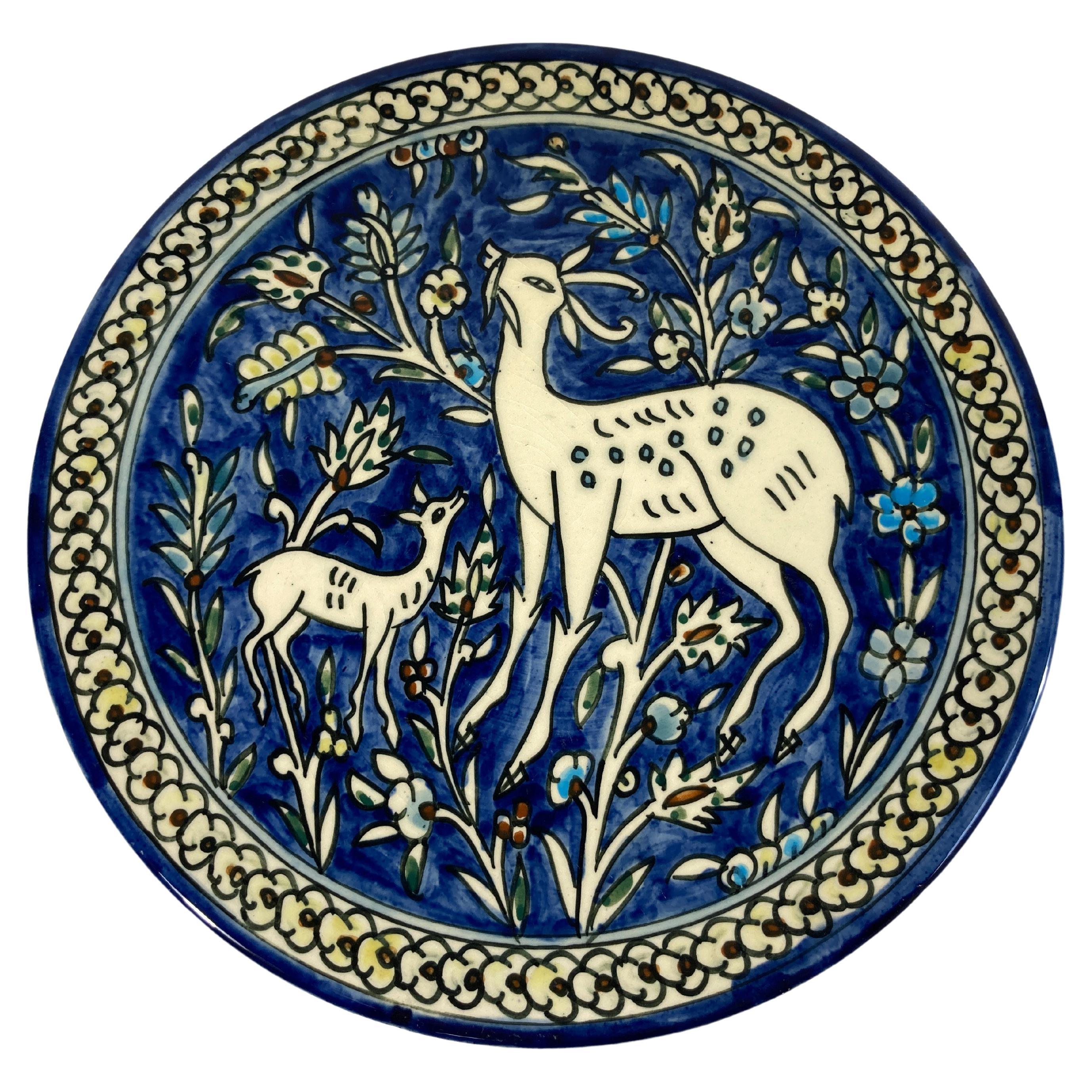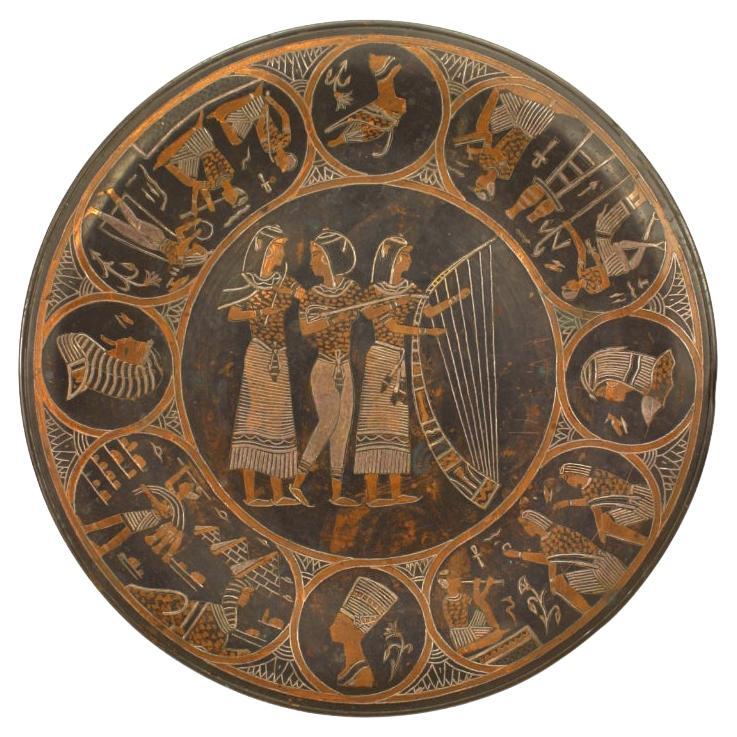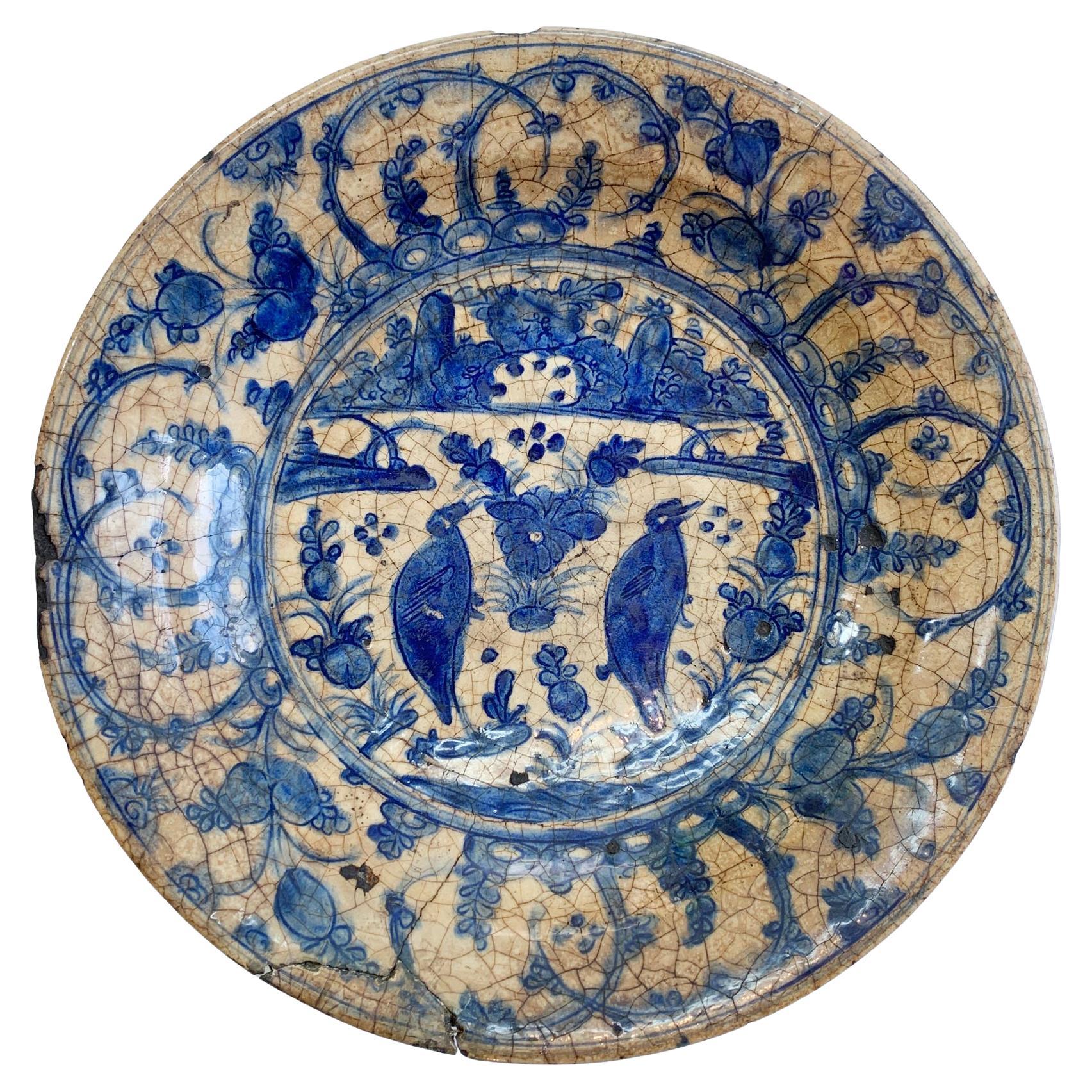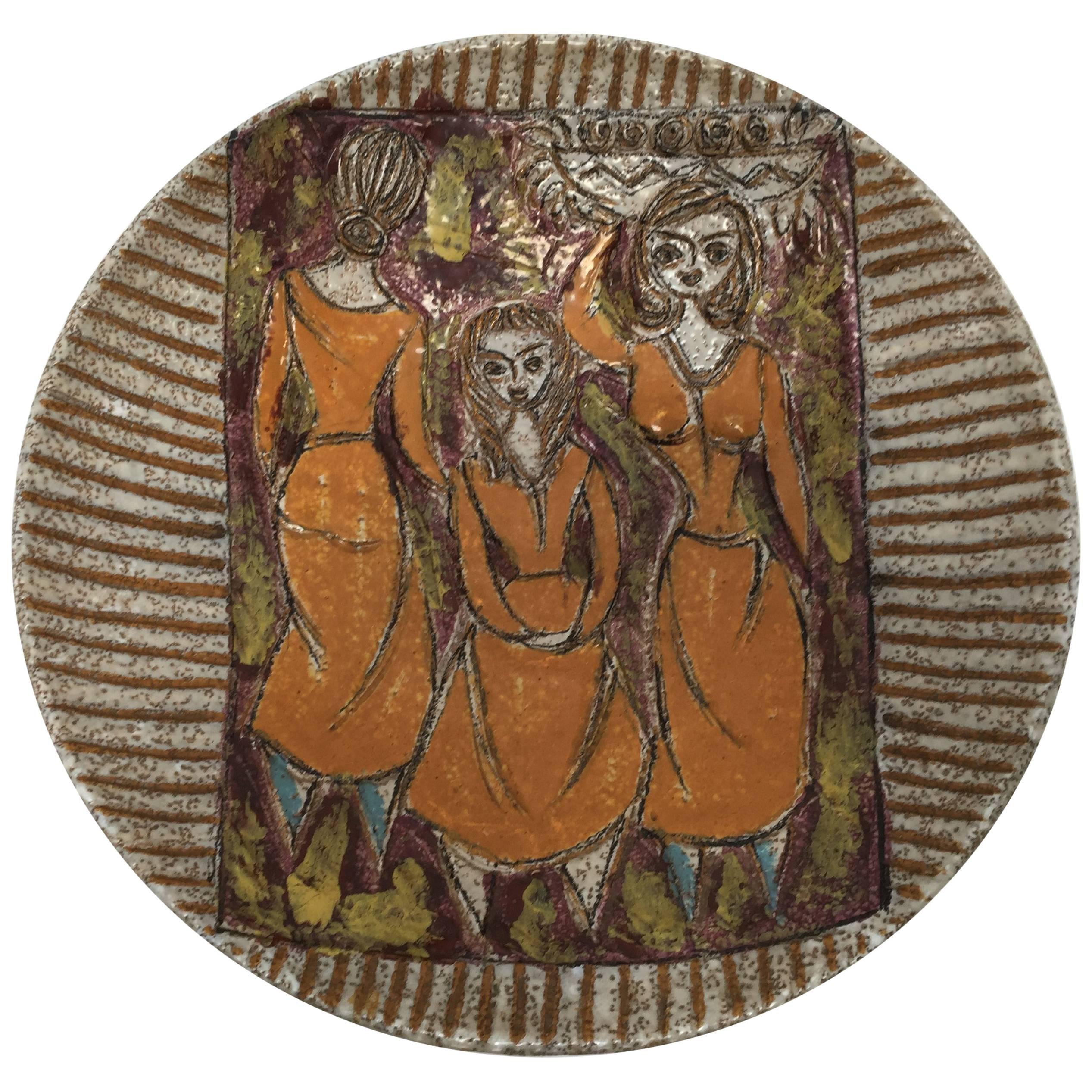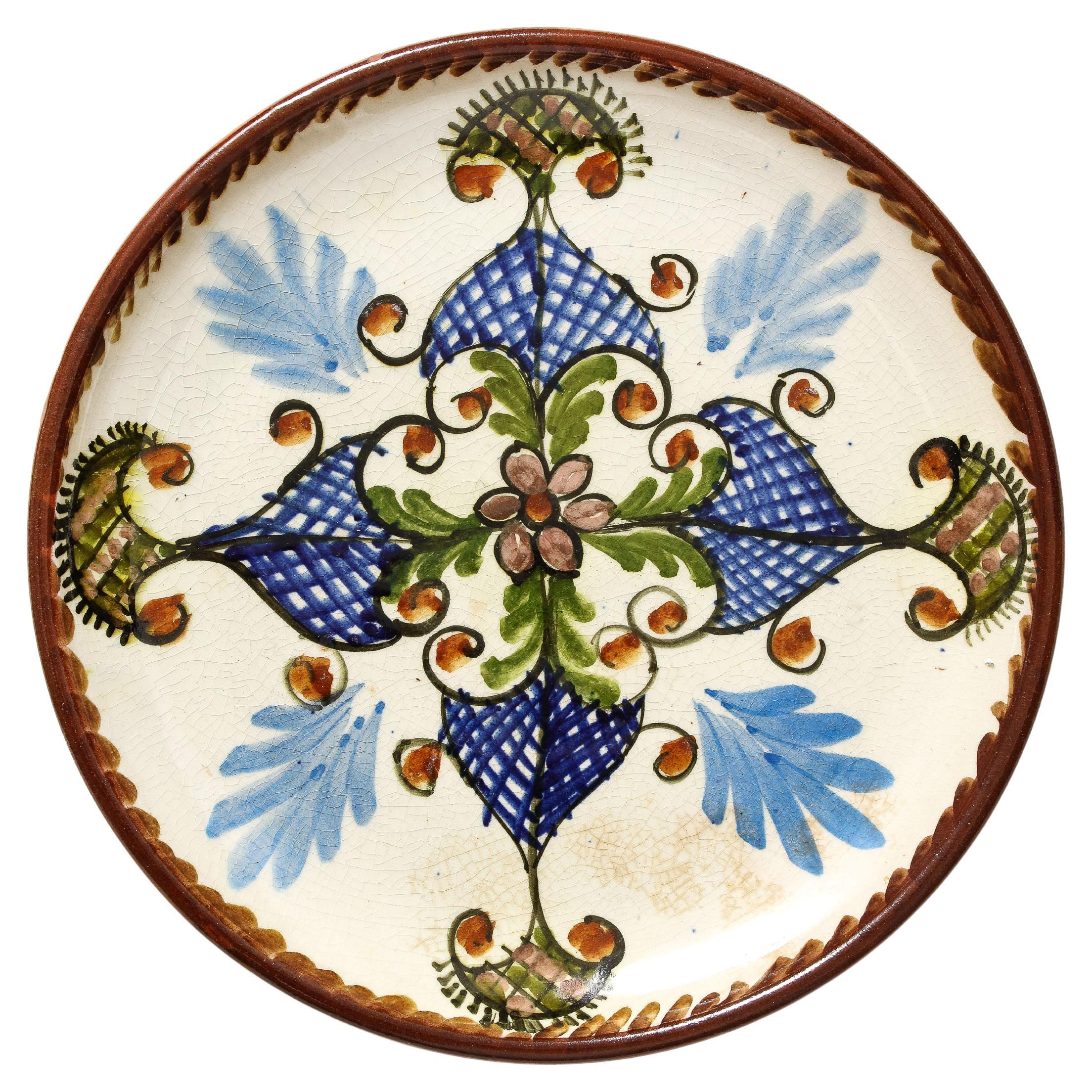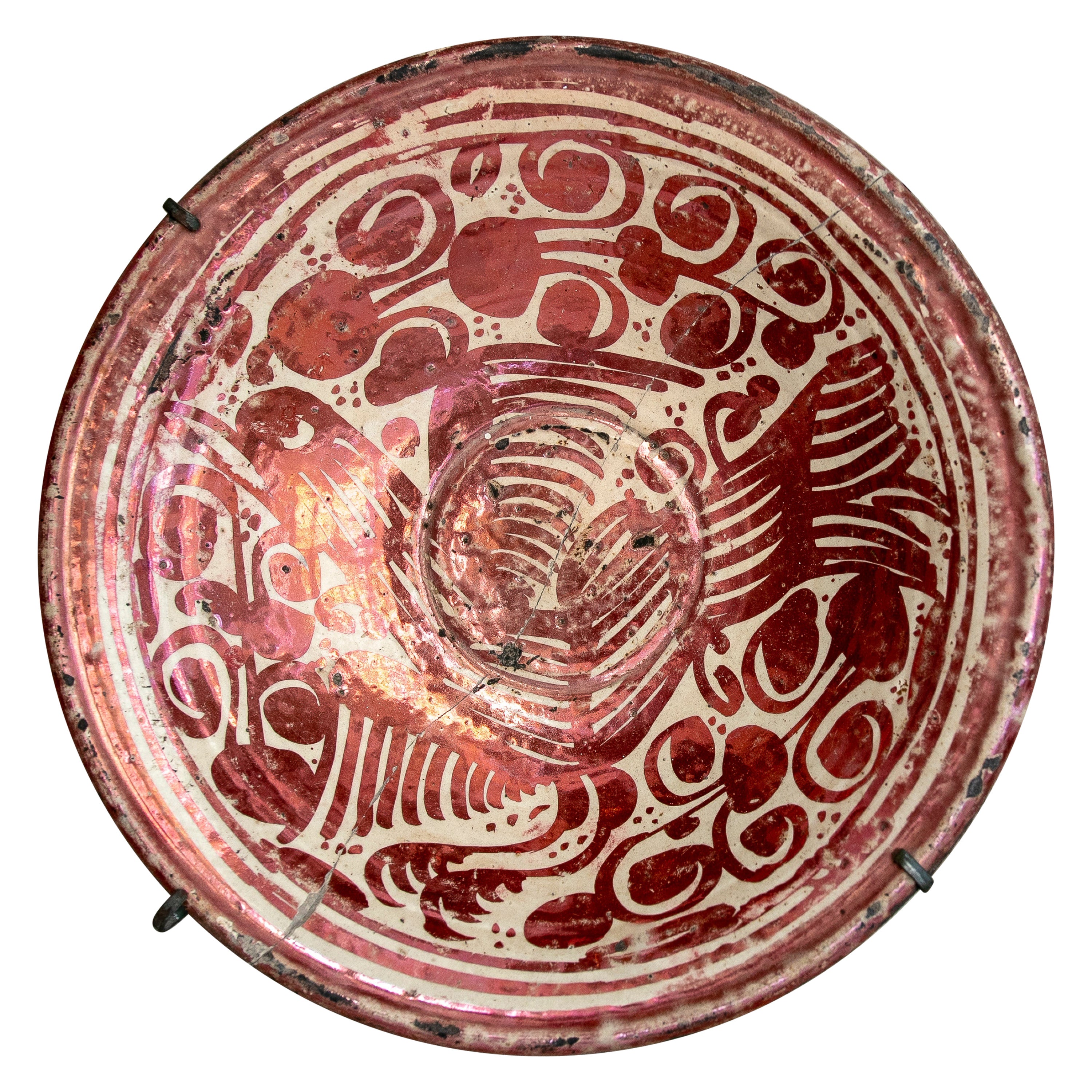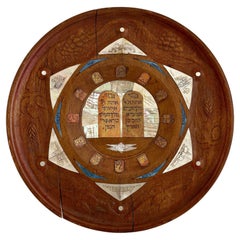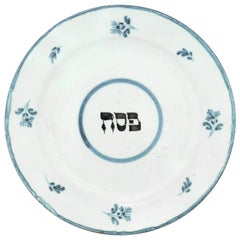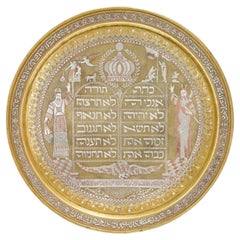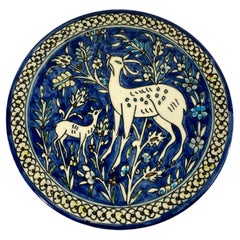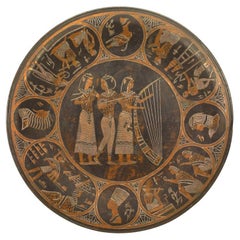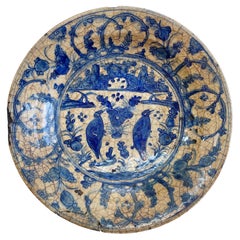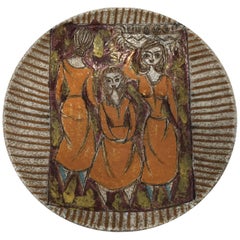Items Similar to Early 20th Century Armenian Pottery Plate from Jerusalem
Want more images or videos?
Request additional images or videos from the seller
1 of 11
Early 20th Century Armenian Pottery Plate from Jerusalem
$7,719
$11,87534% Off
£5,834.61
£8,976.0334% Off
€6,705
€10,315.0534% Off
CA$10,748.66
CA$16,535.8634% Off
A$11,957.44
A$18,395.4734% Off
CHF 6,268.24
CHF 9,643.1434% Off
MX$146,117.04
MX$224,788.1734% Off
NOK 79,818.24
NOK 122,793.3234% Off
SEK 75,137.83
SEK 115,592.9234% Off
DKK 50,050.29
DKK 76,997.9534% Off
Shipping
Retrieving quote...The 1stDibs Promise:
Authenticity Guarantee,
Money-Back Guarantee,
24-Hour Cancellation
About the Item
Extremely rare Armenian pottery plate depicting the mosaic floor at the ancient synagogue of Beit Alpha in Israel, circa 1920.
Jerusalem's ancient Armenian Community experienced a major increase in numbers as survivors of the Armenian Genocide perpetrated by the government of the Ottoman Empire beginning in 1915 found refuge in Jerusalem's Armenian Quarter. The industry is believed to have been started by refugees from Kütahya, a city in western Anatolia noted for its Iznik pottery. The tiles decorate many of the city's most notable buildings, including the Rockefeller Museum, American Colony Hotel, and the House of the President of Israel.
David Ohannessian (1884–1953), who had established a pottery in Kütahya in 1907, is credited with establishing the Armenian ceramic Craft industry in Jerusalem. In 1911 Ohannessian was commissioned with installing Kütahya tile in the Yorkshire home of Mark Sykes. In 1919 Ohannessian and his family fled the Armenian Genocide, finding temporary refuge in Aleppo; they moved to Jerusalem when Sykes suggested that they might be able to replicate the broken and missing tiles on the Dome of the Rock, a building then in a decayed and neglected condition. Although the commission for the Dome of the Rock did not come through, the Ohannession pottery in Jerusalem succeeded, as did the Karakashian the painters and Balian the potters that Ohannessian brought with him from Kuttahya to help him with the project in 1919. after about 60 years new Armenian artists started to have their own studio’s
In 2019 the Israel Museum mounted a special exhibition of Jerusalem pottery in its Rockefeller Museum branch location.
The ancient synagogue of Beit Alpha is located in the Beit She'an Valley, in the north-east Israel. The nearby ruins of Khirbet Beit Ilfa preserve the ancient name.
The mosaic floor of the synagogue was discovered in 1929, when members of Kibbutz Beit Alpha dug irrigation channels for their fields. Excavations were carried out the same year, exposing mosaics preserved intact for almost 1,500 years. Later excavations, in the early 1960s, exposed remains of some houses, indicating that the synagogue had stood in a Jewish village of the Byzantine period (5th-6th centuries).
The entire prayer hall is paved in mosaic. The floor of the western aisle is decorated with squares in geometric patterns; the eastern aisle is entirely paved in undecorated white mosaic.
The colorful mosaic floor of the nave is divided into three distinct panels, all enclosed by a decorated band with a variety of motifs: geometric patterns, fruit, birds and animals.
Appears in the central panel. These astrological signs, though condemned by the prophets, were widely used as decorative elements in both churches and synagogues of the Byzantine period. The twelve signs are arranged in a circle and accompanied by their Hebrew names. In the center of the zodiac, the sun god Helios is represented seated in a chariot drawn by four horses. The Four Seasons appear in the corners of the panel in the form of busts of winged women wearing jewels; they are inscribed with the Hebrew months initiating each season: Nisan (spring), Tamuz (summer), Tishri (autumn) and Tevet (winter).
The splendid mosaic floor of the ancient synagogue of Beit Alpha is one of the finest uncovered in Israel. It is unique in both motifs and workmanship. The synagogue itself was small and simply built, but its mosaics represent a Folk Art that is striking, very colorful and rich in motifs. The synagogue was in use during the Byzantine and the Early Islamic periods (7th-8th centuries).
About the Seller
5.0
Recognized Seller
These prestigious sellers are industry leaders and represent the highest echelon for item quality and design.
Established in 2006
1stDibs seller since 2020
130 sales on 1stDibs
Typical response time: 1 to 2 days
- ShippingRetrieving quote...Shipping from: New York, NY
- Return Policy
Authenticity Guarantee
In the unlikely event there’s an issue with an item’s authenticity, contact us within 1 year for a full refund. DetailsMoney-Back Guarantee
If your item is not as described, is damaged in transit, or does not arrive, contact us within 7 days for a full refund. Details24-Hour Cancellation
You have a 24-hour grace period in which to reconsider your purchase, with no questions asked.Vetted Professional Sellers
Our world-class sellers must adhere to strict standards for service and quality, maintaining the integrity of our listings.Price-Match Guarantee
If you find that a seller listed the same item for a lower price elsewhere, we’ll match it.Trusted Global Delivery
Our best-in-class carrier network provides specialized shipping options worldwide, including custom delivery.More From This Seller
View AllMid-19th Century Syrian Kabbalistic Copper Plate – Handcrafted and Engraved
Located in New York, NY
This intricately engraved copper plate from mid-19th century Syria is a remarkable example of Kabbalistic artistry and spiritual symbolism. Featuring finely inscribed Hebrew letters,...
Category
Antique Mid-19th Century Syrian Religious Items
Materials
Copper
Early 20th Century Bezalel Jerusalem Shabbat Tray
Located in New York, NY
Early 20th century Bezalel Jerusalem wooden tray inlaid with Jerusalem stone and mother of pearl.
The large tray is carved with the Seven Species on its...
Category
Early 20th Century Israeli Folk Art Religious Items
Materials
Marble
$15,000 Sale Price
20% Off
Early 18th Century Dutch Tin-Glazed Earthenware Passover Plate
Located in New York, NY
18th century tin-glazed earthenware Passover plate, Delft, the Netherlands.
Decorated with a foliate design in light blue, the Hebrew word "Pesach" (Pas...
Category
Antique Early 18th Century Dutch Religious Items
Materials
Earthenware
$1,910 Sale Price
20% Off
A Large Damascened Silver and Copper Dish, probably Damascus, early 20th century
Located in New York, NY
A Glorious Large Damascened Silver and Copper Dish, probably from Damascus in the early 20th century.
The term "Damascene" originates from Damascus, the capital of Syria, which was ...
Category
Early 20th Century Syrian Decorative Dishes and Vide-Poche
Materials
Silver, Brass, Copper
An Iranian Silver Amulet, Antique Judaica from Iran
Located in New York, NY
This striking antique silver amulet from Iran is a beautiful example of Persian Jewish craftsmanship. Its scalloped, shield-like form is meticulously ha...
Category
Early 20th Century Persian Sterling Silver
Materials
Silver
A Hand Painted Stone by Ilya Schor
Located in New York, NY
This exquisite hand-painted stone by the renowned artist Ilya Schor, created in Provincetown, Massachusetts, during the 1950s, beautifully captures the regal and spiritual essence of...
Category
Mid-20th Century American Folk Art Paintings
Materials
Stone
You May Also Like
Jerusalem Polychrome Hand Painted Ceramic Plate
Located in North Hollywood, CA
Vintage hand painted and handcrafted ceramic wall decorative plate with polychrome deer scene.
It has a beautifully hand painted scene with deers enjoying the outdoors , surrounded by flowers in blue and white, turquoise, light and dark green foliage.
An Islamic ceramic...
Category
Mid-20th Century Israeli Folk Art Ceramics
Materials
Ceramic
Middle Eastern Egyptian Charger Wall Plaque
Located in Queens, NY
Middle Eastern Egyptian style (19th Century) small copper and silver deposit round charger / wall plaque with 3 figures and a harp centering various Egyptian motifs. Mounted on a stand.
Category
Antique 19th Century Unknown Egyptian Revival Decorative Art
Materials
Copper
16th Century Safavid Pottery Dish Plate
Located in Hastings, GB
Probably Kirman, 16th/17th Century, Persia. Of Low rounded profile, on short a foot and with sloping rim, this Kirman blue and white dish with white slip decoration and stylized dens...
Category
Antique 16th Century Persian Islamic Ceramics
Materials
Ceramic, Pottery
Italian Art Studio Pottery Vintage Plate in Fanciullacci Style
Located in North Hollywood, CA
1950s Mid-Century Modern handcrafted and hand-decorated large bowl in the style of Fratelli Fanciullacci.
Vintage handcrafted Italian art studio pottery, Florence.
Bands with vertica...
Category
Vintage 1950s Italian Mid-Century Modern Decorative Bowls
Materials
Ceramic
Glazed Ceramic Decorative Plate, Greece, 20th C
Located in New York City, NY
Decorative glazed ceramic plate. Hand-painted floral pattern, created in Greece in the early 20th C.
Category
20th Century Greek Dinner Plates
Materials
Ceramic
17th Century Spanish Valencian Manises Lusterware Ceramic Plate
Located in Marbella, ES
Cerámica esmaltada con decoración de reflejo metálico
Se trata de una cerámica esmaltada, es decir, con un baño de esmalte blanco, muy puro en los mejores ejemplos, que se cuece en ...
Category
Antique 17th Century Spanish Ceramics
Materials
Ceramic
